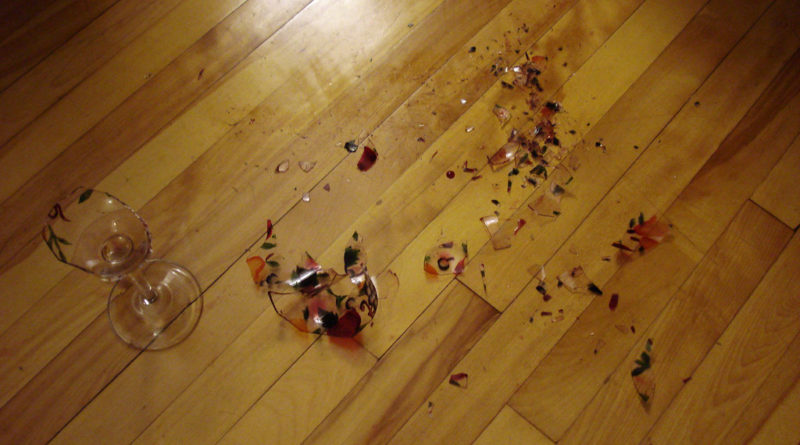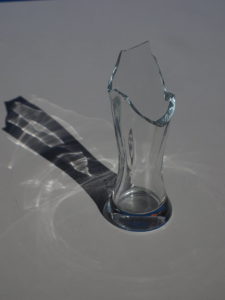How to Dispose of Broken Glass in the UK Safely
Ever had a glass break and wondered how to dispose of the shards safely and responsibly? Dealing with broken glass can be a daunting task, fraught with potential hazards and environmental implications. This comprehensive guide will demystify the process, providing you with the knowledge and confidence to handle broken glass like a pro. We’ll delve into the potential risks that come with handling broken glass and the essential tools you’ll need to manage the task safely. We’ll walk you through a detailed process of collecting and packaging the glass securely, ensuring you’re well-versed in the safest techniques. Moreover, we’ll enlighten you about the local rules and regulations surrounding glass disposal, so you can stay compliant and avoid unnecessary fines. Lastly, we’ll explore eco-friendly disposal options, helping you to minimise your environmental footprint. So, let’s embark on this journey of turning a potentially dangerous situation into a manageable task, all while doing our bit for the environment.
1. Understanding the Risks Associated with Broken Glass
Handling broken glass presents a myriad of risks, primarily due to its sharp edges and unpredictable shapes. One of the most immediate dangers is physical injury, which can range from minor cuts to severe lacerations. Even small fragments can cause significant harm if they penetrate the skin deeply or are accidentally ingested or inhaled.
On the other hand, the proper handling and disposal of broken glass can significantly mitigate these risks. By using appropriate protective equipment and following established safety procedures, you can prevent injuries and ensure that the glass is disposed of in a way that does not pose a threat to others. However, it’s important to note that even with these precautions, there is always a residual risk involved.
Moreover, broken glass can also pose environmental risks if not disposed of correctly. Glass is non-biodegradable and can persist in the environment for thousands of years. Improper disposal can lead to environmental contamination, harm to wildlife, and contribute to the growing problem of waste management. Conversely, proper disposal and recycling can help to mitigate these environmental impacts, turning a potential con into a significant pro.
2. Essential Tools and Equipment for Safe Glass Disposal
When it comes to the safe disposal of broken glass, certain tools and equipment are absolutely essential. First and foremost, a pair of heavy-duty gloves is a must-have to protect your hands from sharp edges. Additionally, a sturdy broom and dustpan are indispensable for sweeping up smaller shards that may be scattered around. For larger pieces, consider using a pair of tongs specifically designed for handling glass. It’s also advisable to have a dedicated container for broken glass, preferably one that is puncture-resistant. This will ensure that the glass remains contained and doesn’t pose a risk to anyone. Lastly, don’t forget to use a marker to clearly label the container as ‘Broken Glass’ to prevent any unfortunate accidents. Remember, safety should always be your top priority when dealing with broken glass.
3. Step-by-Step Guide to Safely Collecting Broken Glass
Accidents happen and glass breaks. The first step in dealing with broken glass is ensuring your safety. Always wear protective gloves to avoid cuts and injuries. If the broken glass is large, carefully pick up the pieces and place them in a cardboard box. For smaller shards, use a dustpan and brush to sweep them up. Never use your bare hands as small, sharp fragments can easily embed in your skin.
Once you’ve collected all the pieces, it’s crucial to dispose of them properly. Never put broken glass directly into your regular waste bin. It can cause injury to waste management workers and can also break waste disposal equipment. Instead, wrap the glass in several layers of newspaper or place it in a sturdy cardboard box. Seal the package securely with tape and clearly mark it as ‘Broken Glass’ before disposing of it in your general waste bin.
Comparatively, the disposal of broken glass differs from other types of waste. For instance, while paper and plastic can be recycled, broken glass often cannot due to potential contamination and the risk it poses to recycling facility workers. Check with your local waste management facility for specific guidelines. Here’s a comparison table to illustrate the differences:
Type of Waste | Disposal Method |
|---|---|
Paper | Recycle bin |
Plastic | Recycle bin |
Broken Glass | General waste bin (properly packaged and labelled) |
4. Proper Packaging Techniques for Disposing of Broken Glass
One of the most crucial steps in disposing of broken glass is proper packaging. This not only ensures the safety of those handling the waste but also prevents further breakage. The first step is to gather all the pieces of broken glass carefully. Use a broom and dustpan for larger pieces and a piece of bread or damp paper towel for smaller shards. Remember to wear protective gloves to avoid injuries.
Next, place the broken glass in a sturdy, puncture-resistant container. A cardboard box or a plastic bucket can serve the purpose. However, if the glass is extremely sharp or large, consider using a metal container. To further enhance safety, you can line the container with a thick layer of newspaper or bubble wrap. This will cushion the glass and reduce the risk of it piercing through the container. Here are some key points to remember:
- Always use a container larger than the broken glass.
- Do not overfill the container.
- Seal the container securely after placing the glass inside.
Finally, label the container clearly. This is a crucial step that should not be overlooked. Indicate that the container holds broken glass to alert anyone handling it. You can use a permanent marker to write directly on the container or attach a label. This simple act can prevent potential accidents and injuries. Remember, proper disposal of broken glass is not just about getting rid of it, but also ensuring it does not pose a risk to others.
5. Local Regulations and Guidelines for Glass Disposal
Understanding the local regulations and guidelines for glass disposal is crucial to ensure that you are not inadvertently causing harm to the environment or breaking any laws. In many areas, broken glass is considered hazardous waste and must be disposed of properly. It’s important to check with your local waste management facility or council to understand the specific rules in your area. These regulations are in place to protect both the environment and the people handling the waste, so it’s essential to follow them.
Furthermore, some areas may have recycling programs in place for glass, even if it’s broken. This can be a more sustainable option than sending it to the landfill. However, it’s important to note that not all glass can be recycled. For example, tempered glass, window glass, and mirror glass are often not accepted in standard recycling programs due to their different melting points and potential for contamination. In conclusion, understanding and adhering to your local regulations and guidelines for glass disposal is not only a legal obligation but also a step towards a more sustainable and responsible waste management practice.
6. Environmentally Friendly Options for Broken Glass Disposal
Disposing of broken glass in an eco-friendly manner is not only beneficial for the environment, but it also helps in reducing landfill waste. Recycling is one of the most common methods, however, not all types of glass can be recycled. For instance, window glass and glassware are typically not accepted by most recycling centres due to their different melting points compared to container glass. Another option is upcycling, which involves transforming the broken glass into a new product. This could be anything from a mosaic art piece to a garden path. Lastly, some communities offer glass waste collection programs where the glass is used for local projects such as road and construction fill.
Disposal Method | Examples | Benefits |
|---|---|---|
Recycling | Container glass (bottles, jars) | Reduces landfill waste, conserves natural resources |
Upcycling | Mosaic art pieces, garden paths | Reuses broken glass, encourages creativity |
Glass waste collection programs | Road and construction fill | Supports local projects, reduces landfill waste |



